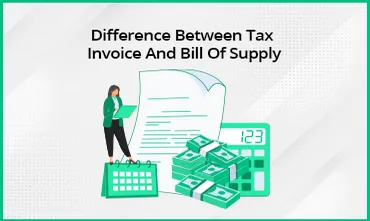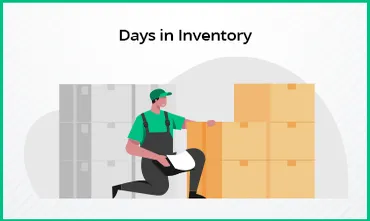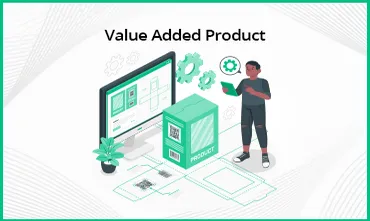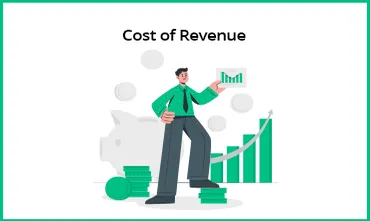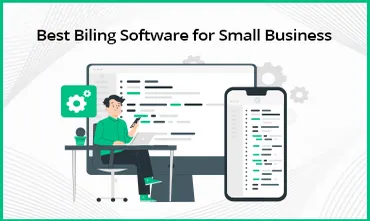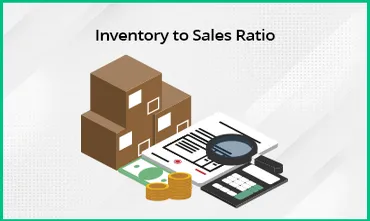As more Indians have shifted to mobile phones, the dire need for connectivity resulted in vast adoption of data servers and an increase in internet penetration across cities and suburbs. A cashless type of economy is the result of these two changes.
Today, smartphones in the economic range, can provide quite a decent access to the digital world as well. Further, factors such as ever-changing, growing demand by customers for innovation, and government's initiatives to regulate and limit the flow of cash, are leading India's path towards a cashless economy. Adding to this, dynamic growth in the number of customer service providers, across diverse channels such as manufacturing, eCommerce, is also an important factor in increasing the adoption of a cashless economy.
In this blog, we'll dive deeper into the concept of a cashless economy, the different advantages and needs for a cashless economy, amidst several other important things. So, let's get started!
What Is a Cashless Economy?
A cashless economy is where transactions occur via cards, payment wallets and other digital modes, replacing traditional payment modes such as cash or coins.
In other words, the concept of a cashless economy is where the flow of money is facilitated via digital means (mobile wallets, debit cards, credit cards, or net banking) without using cash. Thereby, the types of cashless economy in every country will be based on the dominant digital payment method used in the country.
The government's demonetization initiative taken in 2016 paved the way for a cashless economy in India. Soon after, when the world was grappling with the pandemic, the government launched Unified Payment Interfaces (UPI) and rapidly established e-payment startups. The onset of the pandemic led to a paradigm shift in the mindset of the people to leverage the technology at hand by embracing a cashless mindset.
Related: GST Number Search Tool
Cashless Payment Modes
To switch to a digital and cashless economy, one of the most important things is the different modes of payment that one will rely on, in place of cash. Let's explore the various channels:
Mobile Wallet
There are several examples of a mobile wallet used by people in general. As of today, most of us have used them, and are aware of its functionalities. A mobile wallet is a virtual wallet that you can access with the help of your smartphone, and it acts as a payment gateway for all your payment transactions.
A wallet is as widely accepted as other means of payment and eliminates the need for cards and other mediums to initiate a transaction.
Plastic Money
Plastic money is one of the most common and relied-upon cashless payment modes that people have been using for a long time now. It includes different categories of cards, such as debit cards, credit cards, and prepaid cards, in both physical and virtual forms. Capitalist economies in the world have been thriving on it for years now.
The use of plastic money is economical since it helps minimize the use of paper. Moreover, with plastic money, you can easily track your accounting history and reduce your dependency on cash.
Net Banking
Net banking is different from how cards and wallets work; it is a mode of transfer of money from one bank account to another. Before using wallets and UPIs, net banking was a popular way to transfer funds, and is still widely used.
With net banking, you can log on to your bank account online and initiate funds via Real-Time Gross Settlement (RTGS), National Electronic Funds Transfer (NEFT), or Immediate Payment Service (IMPS). All these options can be conducted with net banking at a minimal cost.
Advantages of a Cashless Economy
Cashless economy is a relatively new concept in India; it has emerged recently, and despite initial challenges, it has witnessed high acceptance. Let's look at the advantages that have helped people shift towards going cashless.
Transparency in the system
Digital transactions have one major benefit: they bring transparency and accountability to the monetary system. Digitizing monetary transactions helps banks recognize customers and track money flow. This helps to reduce financial fraud and crimes such as tax evasion and counterfeit money in the economy.
Convenience
The entire process of cashless systems ensures easier payments anytime and anywhere. For instance, if you want to send money to your family residing in another city, you don't have to go through the hassle of visiting the bank to initiate the transaction. A simple NEFT or IMPS from your phone does the job.
Reduced cash-related crimes
One of the primary reasons the government decided on demonetization was to restrict the use of counterfeit money. Moreover, digital transactions always help curtail black money practices that negatively impact the country's growth. The chances of flow of black money and illegal transactions are reduced when a transparent and rigid digital system is established.
Ease of international transactions
Earlier, engaging in international transactions was troublesome due to the absence of facilities such as net banking and plastic money. Government initiatives to regulate digital payments, have eased up the process of international transactions for people living within and outside the country.
Reduced cost on currency production
As the country shifts to digital payments, production costs for currency reduce significantly, eliminating additional payouts required by the government. This also eases statutory burden for Reserve Bank of India (RBI), as the regulatory authority.
Disadvantages of a Cashless Economy
Let's look at some disadvantages of a cashless economy:
Cyber security
With increasing reliance on the internet, the ease of transactions has increased. However, digital payment methods have also opened avenues for online frauds. A recent report by Microsoft revealed that on an average, an Indian consumer lost Rs. 15,334 by falling prey to online scams in 2021. The most common payment channels for these consumers were bank transfers and credit cards.
As of now, there are no stringent laws or legal processes that can help eliminate online fraud. Add to this, the risk of data theft that banks can face, which can uncover financial information of thousands of users, and can lead to massive security breaches.
Rise in public expenditure
The convenience that a cashless transaction system brings may become addictive. People and enterprises tend to overspend when making digital payments, which can lead to spending traps, especially for the younger population. Eventually, this may also increase public expenditure rates significantly.
Identity thefts
Lack of financial knowledge is causing an increase in identity thefts in the country. Those who leverage cashless payment modes, but do not have enough knowledge in the segment, may lose confidential information along with hard-earned money.
Illiteracy
In India, financial illiteracy and the hesitance to digitize are the biggest barriers towards transitioning to cashless payment transactions.
The internet and smartphone penetration in the country is still catching up. Most of the population in tier 3 towns and villages are not tech-savvy enough to easily navigate digital payment functions. Switching from a cash-based to a digital medium can be difficult for people, who require a deeper financial understanding and more time to adapt to such transactions.
Challenges in Transitioning Into a Cashless Economy
Although advantages of a cashless economy outnumber the disadvantages in the larger scheme, there are several challenges to overcome, for transitioning to a cashless economy. The country's population, poverty graph and other demographic factors play a key role in this journey. We have listed a few challenges to understand these better:
Extreme dependency on cash
Decades ago, since the barter system faded away, people have been leveraging the cash-based system and currencies have come into the picture. Giving up such a strong habit is not easy, even if people are convinced of the advantages of using digital payments.
Flawed digital infrastructure
The increasing number of scams and frauds in cashless transactions across different channels such as banks, ATMs, internet connectivity, and smartphones, is indicative of a vast scope of improvement in our digital payments infrastructure. This prevents people from trusting the government's initiatives to transition to a digital world. Therefore, a secure and well-regulated digital infrastructure is the need of the hour.
Unconvinced population
The government runs several campaigns to educate and inform people of digitization benefits; yet a large percentage of the population lacks faith in the cashless financial system. Convincing this section of citizens to go completely cashless is an uphill task.
Fear of losing control
One of the primary reasons people don't prefer going completely digital is the fear that they will lose control over their finances. For decades, cash transactions have created an assurance for businesses that they fear not having with virtual and cashless transactions.
Connectivity
Even though connectivity technologies in the country have improved significantly, the penetration of high-speed broadband is still weak in many regions across the country. Most metropolitan cities also face connectivity issues, let alone rural areas.
Lack of digital literacy
Being literate with respect to transacting digitally, means that one is aware of the various factors and risks involved with digital payments. Lack of digital literacy may also be attributed to generation gaps, as they pose a major hurdle in the process of digitizing transactions in India.
Government Initiatives for Cashless Economy in India
The government is taking several steps to overcome the above challenges and establish a cashless economy. Let's understand more about these initiatives:
Demonetization
The government implemented demonetization in 2016 to curb the circulation of black money. Demonetization was one of the most radical steps taken in this direction. This initiative significantly reduced availability of liquid cash and pushed people towards opting cashless modes of payments. It led to greater use of payment modes like plastic money, digital wallets, and also led to a sharp spike in online sales.
Pradhan Mantri Jan Dhan Yojana
Financial inclusion is one of the primary reasons why India is unable to develop rapidly. Addressing this cause, the Pradhan Mantri Jan Dhan Yojana was one of the most renowned and successful initiatives by the government, to eliminate the challenges of financial inclusivity across the country. The aim was to offer banking to each household, by allowing them access to all services such as bank accounts, credit facilities, pensions, and more.
Direct Benefit Transfer (DBT)
The DBT scheme was launched to provide financial benefits to individuals, such as subsidies directly in the beneficiaries' bank accounts. This included benefits such as LPG subsidies, old age pensions, and scholarships, helping the rural population to move towards the digital system efficiently. This encouraged people to entrust banks with their money, while also addressing concerns of financial knowledge and literacy.
Unified Payment Interface (UPI)
A Unified Payment Interface is a highly efficient system that allows people to link multiple bank accounts via a single platform and merges different banking features on a single unified platform. This further helps individuals rely on a centralized, convenient measure of cashless mode of transactions.
Aadhar Enabled Payment System (AEPS)
Another government-launched digital payment mode is the Aadhaar Enabled Payment System. This leverages the Unique Identification Authority of India (UIDAI) number of individuals, to help them transfer money seamlessly. It enables people with Aadhar Cards to easily perform financial transactions at point of sale centers.
Financial Literacy Centres
Lastly, as part of the Pradhan Mantri Jan Dhan Yojna, financial education programs were also held in government-led literacy centers. These centers aimed to educate more people in the country regarding the benefits of a cashless economy for the community.
These government initiatives combined, have helped the country reach noteworthy milestones in terms of financial digitization and the national goal of a cashless economy.
Is India Ready for a Cashless Economy?
The government's initiatives have contributed to equipping people to leverage several fintech solutions over the years. But although India has achieved significant progress towards going completely digital, we still have a long way to go. In addition to literacy centers and digital banking awareness, the government must undertake continuous and widespread digital education drives. This will further the cause of spreading information about e-transactions and virtual money.
Digital banking must be simplified further, and transaction fees levied must be controlled. These factors will ensure that people are not hesitant to switch to digital-based transactions in their day-to-day lives.
Becoming a cashless economy may have certain challenges and concerns, but they do not outweigh the positive points. With the right strategies and implementation, India can easily pace up to becoming an efficient cashless economy.
Transforming India by Embracing a Cashless Economy
Advancement of fintech solutions have significantly eased the process of how we handle our money and conduct payments. Today, more Indian citizens are inclined to use fintech apps and platforms that ease transacting as a process.
This positive pattern is catching up with the larger population across age groups, leading to a constructive impact on the country's overall growth. It's only a matter of time before we see the impact of a digital economy in India, as black income sources are curtailed, risks of liquid cash are minimized and the monetary system in India becomes more transparent and accountable.
FAQs on Cashless Economy
1. What is digital rupee?
The digital rupee is a digital currency that would be issued by the RBI, the central bank and regulatory body of the Indian banking system. It would be a type of digital currency that could be used for transactions between individuals and businesses, as well as for government services. A digital rupee may be similar to other digital currencies, such as Bitcoin, but it would be backed by the government and regulated by the RBI.
2. Which country has a cashless economy?
Many countries across the globe today have become cashless including Sweden, Finland, Hong Kong, New Zealand, and more.
3. Which country is a leader in digital payment?
A recent Forbes article provided factual insights on why India is the leader in digital finance. Solutions like UPI and Aadhar have enabled India to become the largest real-time market for digital payments, strengthening India's foothold as a digital payments leader.
Digital transactions across the globe have also grown significantly, and this upsurge has only been magnified by the pandemic where contactless payments increased exponentially. As per a recent McKinsey report, the fastest growth in noncash retail payment transactions was seen in emerging markets of Asia and Africa between 2018 and 2021.




